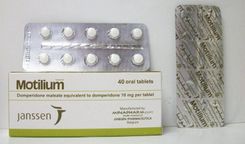This is an automatically translated article.
Cefaclor 375 is a product of Mebiphar (Vietnam), used in many different infectious diseases. So what is Cefaclor 375? Let's find out with Vinmec right in the following article.
1. What is Cefaclor 375?
What is Cefaclor 375? Product Cefaclor 375 has the following ingredients:
Main active ingredients: Cefaclor monohydrate, equivalent to antibiotic Cefaclor, content of 375mg; Excipients: Starch 1500, Microcrystalline Cellulose, Talc powder, Magnesium stearate, Colloidal Silicon dioxide, Croscarmellose sodium, HPMC 606, HPMC 615, PEG 6000, Titanium dioxide, Indigo carmine lake color, Green lake color, Carmoisine lake red , Ethanol 96%... Cefaclor is a semi-synthetic second-generation Cephalosporin antibiotic for oral administration. The effect of Cefaclor is due to inhibition of bacterial cell wall synthesis.
Cefaclor in vitro is active against most strains of bacteria isolated from patients such as Staphylococcus (including penicillinase-producing strains, coagulase-positive, coagulase-negative), Streptococcus pneumoniae, Streptococcus pyogenes, Moraxella catarrhalis, Haemophilus influenzae, Escherichia coli, Proteus mirabilis, Klebsiella spp. , Citrobacter diversus and Neisseria gonorrhoeae...
2. Indications and contraindications of Cefaclor 375
Cefaclor 375 is indicated for the treatment of infections caused by susceptible strains of Cefaclor bacteria such as acute otitis media, acute sinusitis, pharyngitis, recurrent tonsillitis, pneumonia, exacerbation of chronic bronchitis, uncomplicated lower urinary tract infections (cystitis) or skin and soft tissue infections.However, Cefaclor 375 is contraindicated for use in patients with hypersensitivity to Cefaclor or any of the excipients contained in the drug. In addition, Cefaclor 375 is contraindicated in people with a history of allergy to other cephalosporin antibiotics.
3. Dosage of Cefaclor 375
Dosage for adults:
The usual dose is 1 Cefaclor 375 tablet taken every 8 hours; Cases of pharyngitis, tonsillitis, bronchitis, skin and soft tissue infections, lower urinary tract infections can take 1 - 2 tablets of Cefaclor 375 x 2 times a day or 1 tablet of Cefaclor 375 x 3 times per day; Patients with severe infections can take 2 tablets of Cefaclor 375 x 3 times daily; The maximum dose of Cefaclor antibiotic is 4g/day. The dose of Cefaclor 375 for patients with renal failure should be adjusted as follows:
Creatinine clearance 10-50ml/min: It is recommended to use 50% of the usual dose; Creatinine clearance less than 10ml/min: 25% dose is recommended in subjects with normal renal function; Hemodialysis patients: The recommended starting dose is 250-1000g prior to hemodialysis, followed by 250-500mg every 6-8 hours. Elderly people use Cefaclor 375 at the same dose as adults.
Dosage of Cefaclor 375 for children:
Usual dose: 20-40mg/kg/day, divided into 2-3 oral doses; Otitis media: Recommended dose 40mg/kg/day, divided into 2-3 times, but not more than 1g/day. It should be noted: The above drug dosage is for reference only, patients need to strictly follow the instructions and prescriptions of the doctor to achieve high efficiency and avoid unwanted side effects.
Overdose of Cefaclor 375 and treatment:
Symptoms of Cefaclor overdose include nausea, vomiting, epigastric pain, diarrhea; Treatment: No need to wash the stomach, except when using Cefaclor 5 times the normal dose. At the same time, pay attention to protect the airways, support ventilation and give fluids or reduce the absorption of Cefaclor by giving the patient multiple oral doses of activated charcoal.
4. Side effects of the drug Cefaclor 375
Some common side effects of Cefaclor 375 include:
Increased eosinophil count; Cefaclor 375 often causes diarrhea; Measles-like skin rash. Some uncommon side effects of Cefaclor 375 include:
Direct Coombs test false positive; Increased lymphocytes, decreased overall white blood cell count or decreased neutrophils; Nausea, vomiting; Skin itching, urticaria; Genital itching, vaginitis, Candida infection. The following adverse effects of Cefaclor 375 have been reported very rarely:
Anaphylactoid reactions, fever, serum sickness-like symptoms (e.g. erythema multiforme, inflammatory or arthralgia, with or without fever, which may be associated with by lymphadenopathy, proteinuria); Stevens-Johnson syndrome, Lyell syndrome; Generalized pustular skin rash; Thrombocytopenia; Hemolytic anemia; Pseudomembranous colitis ; Increased liver enzymes, cholestatic jaundice; Reversible interstitial nephritis; Mild increase in blood urea, Increase in serum creatinine; Urine tests are not normal; Seizures (when used in high doses with impaired renal function), increased agitation, headache, restlessness, insomnia, hypertonia, dizziness, hallucinations, somnolence; Athritis.
5. Drug interactions of Cefaclor 375
Concomitant use of Cefaclor 375 with anticoagulants Warfarin rarely causes an increase in prothrombin time, which may or may not cause bleeding clinically. When patients combine these two drugs, prothrombin time should be monitored regularly and the dose adjusted if necessary. Probenecid increases serum concentrations of Cefaclor 375. Concomitant use of Cefaclor 375 with aminoglycoside antibiotics or the diuretic Furosemide increases the risk of nephrotoxicity. To avoid drug interactions, patients need to inform their doctors about the drugs, herbs, and supplements they are using so that the doctor can consider and adjust them accordingly.
6. Be careful when using Cefaclor 375
Caution when using Cefaclor 375 in the following cases:
Caution is advised when prescribing Cefaclor 375 to patients with a history of hypersensitivity to penicillin antibiotics because of the possibility of cross-sensitization. Long-term use of Cefaclor 375 may cause pseudomembranous colitis, so special caution should be exercised in patients with a history of gastrointestinal disease, especially inflammatory bowel disease. Cefaclor 375 should be used with caution in patients with impaired renal function and requires dose reduction according to creatinine clearance. Cefaclor 375 does not affect the ability to drive and use machines. Cefaclor 375 should be used during pregnancy only when clearly needed because no adequate studies have been performed in this population. Lactation patients when taking Cefaclor 375 reported very low concentrations in breast milk. However, because the effect on the nursing infant is unknown, mothers taking Cefaclor 375 must be careful when they see signs of diarrhea, thrush and rash. Cefaclor 375 is an antibiotic indicated for the treatment of infections caused by susceptible strains of bacteria. To ensure the effectiveness of treatment and avoid side effects, patients need to carefully read the instructions, and consult the instructions of the doctor, professional pharmacist.
Follow Vinmec International General Hospital website to get more health, nutrition and beauty information to protect the health of yourself and your loved ones in your family.
Please dial HOTLINE for more information or register for an appointment HERE. Download MyVinmec app to make appointments faster and to manage your bookings easily.













